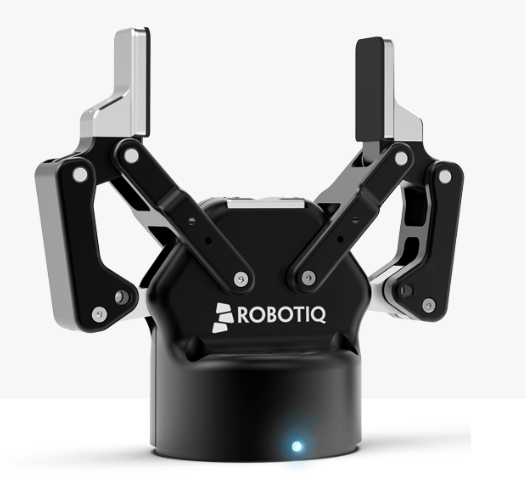The ball is just days away from dropping in Times Square with revelers anticipating 2019 by making resolutions to act better in the coming year. The most human of all traits is to make mistakes. Correcting our wrongs is often a long, arduous task; however, machines are far more capable at avoiding mistakes by isolating errors through tedious repetition.
As I write my last article of the year, I find myself reflecting on how many tasks are really too monotonous for organic species to undertake. I recall my experiences of manufacturing toys in China, watching twenty-year-old testers opening, closing and dropping products from different heights non-stop for eight hours a day. The Chinese factory owner quipped, “this is where we put the stupid ones.” Clearly, I differed with him on the potential of humanity in achieving higher aspirations. In that spirit, quality assurance is one of the areas most overlooked by robot market analysts. In the words of Jason Huggins, founder of Tapster, “The field of software testing is (in my opinion) one of the most active battlegrounds where automation is affecting human jobs. And yet, almost all articles I’ve read about the future of jobs don’t mention the testing industry.”
Recently Universal Robots, the leader in the co-bot space, announced a partnership with 3D Infotech for quality assurance solutions called “Universal Metrology Automation.” This proprietary system integrates Universal Robot’s arms with 3D scanners and inspection software to automatically identify product defects before they ship. Rohit Khanna, 3D Infotech President, explains the impetus for the partnership: “A big challenge for manufacturers is repeatability. When there are operators working in the morning and there is a change of shift in the evening, the output can be quite different. With traditional measuring tools, you only measure what you touch which works out to be under 10 percent of the product so problems can go through the quality assurance process and be completely missed. Our technology measures up to 100 percent of the product repeatably.”
This past week, I caught up with Huggins about Tapster’s use of robots in making our screen activities more enjoyable. He described how their robot interacts “with a device or app in a similar way to how a human would. So if a device or app needs to be tapped with a finger, we provide the robotic equivalent of a finger to perform the test.” According to market research, software quality assurance is estimated to grow to $14 billion by 2025. To keep up with this demand there are not enough human fingers to even test the massive number of screens from our phones, tablets, computers, watches, cars and the Internet of Everything (IOT) which is only multiplying with the growth of connected and autonomous systems. As Huggins expounds, “The smartphone revolution started to change the situation, with the addition of many kinds of new sensors and interactions that needed to be tested in the context of business applications (location tracking with GPS, message delivery with SMS, payments with NFC, etc.). With the rise of IoT and Bluetooth-connected devices (e.g. newer cars, smartwatches, internet-connected alarm systems, etc.), phones now interact with other electronic devices near them, not (just) a remote server.” Huggins continues “And only a robot gives developers the repeatability and consistency of results that simulator-based testing can provide.”
One of Tapster’s early clients was Mercedes Benz, which purchased ten Tapster robots to run usability tests on its Remote Parking Pilot application before it launched to the public on multiple devices. Huggins boasts, “Buying and repurposing an existing industrial robot would have cost too much, and building their own custom solution would have taken too much time. Since Tapster’s robots are often one-tenth the cost of a traditional industrial robot, and more importantly, are specifically designed for the problem of device testing, Tapster hit the sweet spot for what Mercedes-Benz needed and allowed them to have the budget to buy 10 robots, instead of 1!”
I pressed Huggins on the issue of jobs and if he thinks his robots will be displacing millions of human testers. He returned to his favorite metaphor, “Robots are nail guns — they are power tools that empower humans to do more work, quickly and more accurately.” He elaborated further, “Humans are really good because they are so versatile, especially in new and fluid situations.” However, he hesitantly admitted, “Humans are needed to do the manual testing for the years until good test automation tools come on-line.”
As the robot industry begins a new year, we have had to say good bye to Rethink Robotics, Jibo, Kuri among other ventures that shuttered. The creativity of innovators like Huggins provides an optimistic outlook for the months ahead. Punctuating this sentiment, last week co-bot technology company Robotiq, raised $31 million. The company markets its products and services for “assembly, finishing, and quality testing” of hardware and software products. In the words of its founder and CEO, Samuel Bouchard, “Collaborative robotics is transforming industries today, offering low-cost, easy-to-deploy solutions that stand in stark contrast to the more complicated, legacy robotics systems of the past. What is amazing about these systems is how they work side-by-side with humans to improve quality, increase efficiency and minimize worker injuries.” Happy Year Of The Co-Bot!





